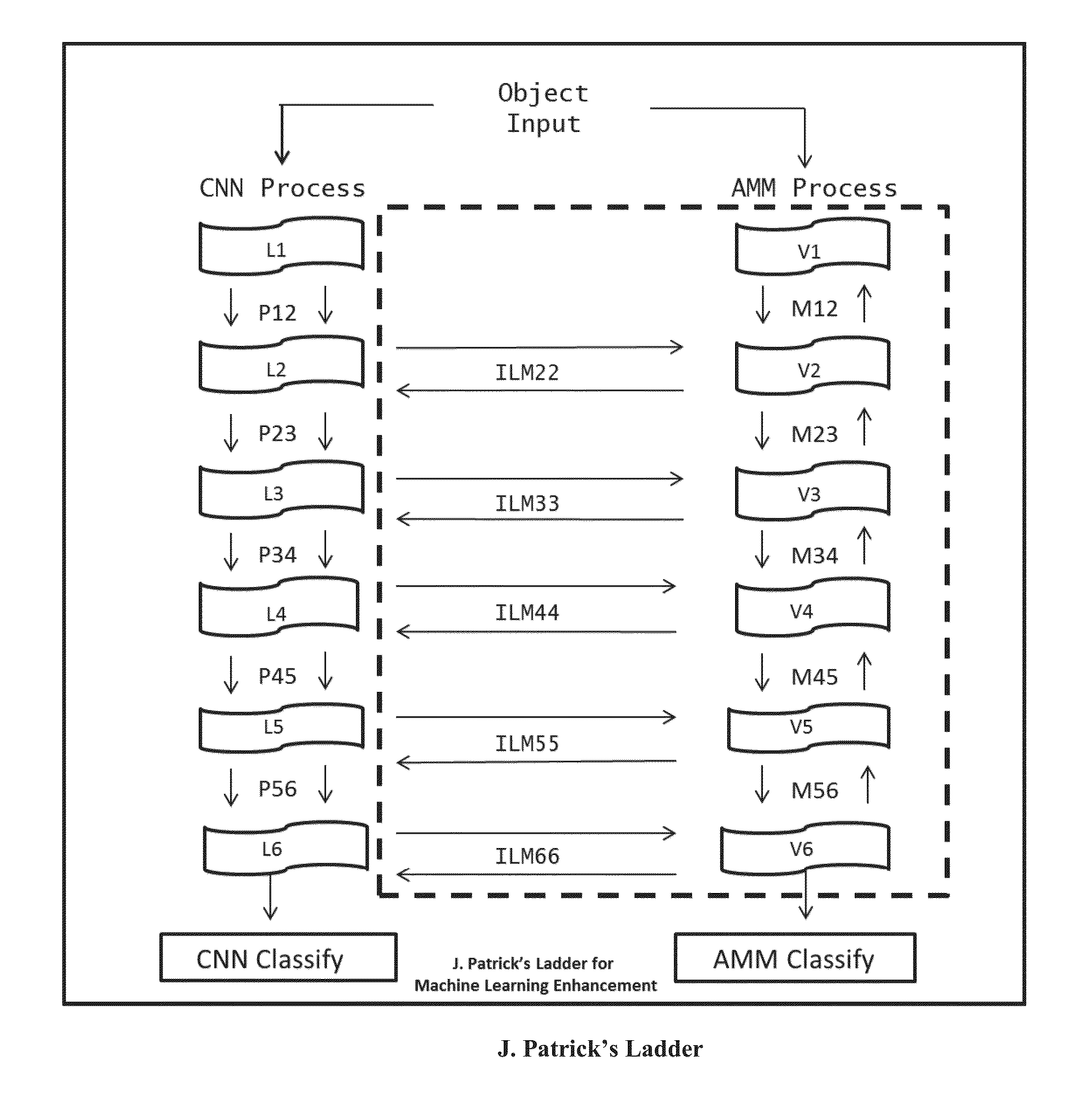J Patrick's Ladder A Machine Learning Enhancement Tool
- Summary
- Abstract
- Description
- Claims
- Application Information
AI Technical Summary
Benefits of technology
Problems solved by technology
Method used
Image
Examples
Embodiment Construction
[0055]This section will describe the details for forming the AMMs which, as has been stated before, are dependent on the CNN processes. The description is broken into two parts. Part 1 describes the process of initialization of the AMMs using the CNN output layers. Part 2 describes the execution of the system and test results are given as well.
[0056]Part 1 is broken into four sub-parts, 1A-1D. These four sub-parts show: (Part 1A) how the V1-V6 vectors are initially formed, (Part 1B) how the initial M12-M56, and M16 matrices are formed, (Part 1C) how the initial matrices are combined to form the so-called additive model; a term coined by Stephen Grossberg and John Hopfield, and (Part 1D) how the additive matrices are stabilized. These are the matrices that form the right rail. It is important to note that Parts 1A-1C are strictly for initialization of the matrices in Part 1D. Once the initialization is complete and the execution of the testing process begins, the vectors V2-V5 can be...
PUM
 Login to View More
Login to View More Abstract
Description
Claims
Application Information
 Login to View More
Login to View More - R&D
- Intellectual Property
- Life Sciences
- Materials
- Tech Scout
- Unparalleled Data Quality
- Higher Quality Content
- 60% Fewer Hallucinations
Browse by: Latest US Patents, China's latest patents, Technical Efficacy Thesaurus, Application Domain, Technology Topic, Popular Technical Reports.
© 2025 PatSnap. All rights reserved.Legal|Privacy policy|Modern Slavery Act Transparency Statement|Sitemap|About US| Contact US: help@patsnap.com



